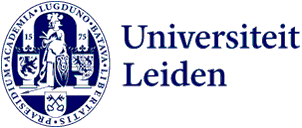Statistical Learning and Prediction
Statistical learning encompasses an extensive collection of statistical techniques for making predictions (supervised context) or finding structure hidden in data (unsupervised context). These techniques are, for example, relevant for (1) predicting disease status and treatment outcome, (2) selecting personnel or students, (3) inferring groups of homogeneous subjects and (4) dimension reduction (PCA). In this course, we will discuss several techniques for making predictions (supervised context) and find hidden structure in data (unsupervised context).
- Target group
- PhD candidate
- Teachers
- Tom Wilderjans (Associate professor) Marjolein Fokkema (Associate professor)
- Method
-
Training course
Deadline registration: 6 January 2026
Course description
Statistical learning refers to a vast set of tools for understanding
data. Two classes of such tools can be distinguished: “supervised” and “unsupervised”. Supervised statistical learning involves building a statistical model for predicting an output (response, dependent) variable based on one or more input (predictor) variables. There are many areas of psychology where such a predictive question is of interest. For example, finding early markers for Alzheimer’s or other diseases, selection studies for personnel or education, or prediction of treatment outcomes. In unsupervised statistical learning, there are only input variables but no supervising output (dependent) variable; nevertheless we can learn relationships and structures from such data using cluster analysis and methods for dimension reduction.
In this course we aim to give the student a firm theoretical basis for understanding and evaluating statistical learning techniques and teach the students skills to apply statistical learning techniques in empirical research. Techniques often referred to as ‘machine learning’ (though we prefer the name ‘statistical learning’, because the basic problems of sampling and probability have not changed with the newer algorithms) will be discussed, including: cross-validation, elastic net regression, clustering (k-means, hierarchical), partial least squares, k-nearest neighbors, decision trees, gradient boosting, random forests, smoothing splines and support vector machines.
Mode of instructions
• The course will be on campus
• Interactive lectures (theory and illustrative examples in R)
combined with practical sessions with exercises in R
(students work on the exercises and solutions are discussed
at the end)
• Students can use (and should bring) their own laptop with R
(and Rstudio) installed
• Students receive a list of online videos and associated parts
and exercises of the book of James et. al, 2021 (see below)
that should be prepared before the course starts. This will
take about 20 – 25 hours of preparation, depending on current statistical knowledge and R skills. Instructions
follow in the beginning of January 2026 (for those enrolled
in the course).
Reading List
• James, G., Witten, D., Hastie, T., & Tibshirani, R. (2021). An introduction to statistical learning: with applications in R (Second Edition). New York: Springer. A free copy can be obtained online, https://www.statlearning.com/
Additional suggested material (not required)
• Berk, R. A. (2008). Statistical learning from a regression
perspective. New York, Springer. (freely accessible within
the Leiden network)
• Kuhn, M. & Johnson, K. (2013). Applied predictive
modelling. New York, Springer. (freely accessible within the
Leiden network).
Entry requirements
• Open to doctoral students and staff members of the Faculty
of Social and Behavioral Sciences, ASCL and ICLON. Also
externals can participate in the course.
• Some basic knowledge of R required (a list of materials that
one can go through to reach the required R level can be
obtained upon request from the coordinator).
Questions?
Contact Tom Wilderjans: t.f.wilderjans@fsw.leidenuniv.nl
